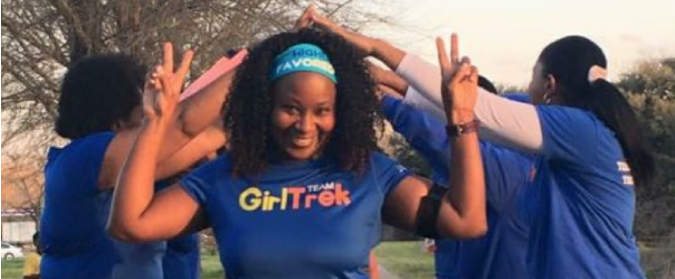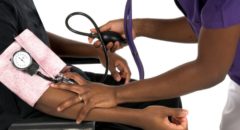
Taunya Stewart woke up feeling strangely hot. Her body felt taut, as though she would pop if someone were to touch her.
“My first thought was, ‘Oh my god, I’m having a heart attack’,” she said.
Stewart called her mom to take her to the hospital, which was 40 minutes away from her home at the time in Mendenhall, Mississippi. They stopped at a convenience store on the way, so she could buy and take some aspirin. (The American Heart Association advises that people call 911 when experiencing warning signs of a heart attack.)
Once they reached the hospital, Stewart learned her blood pressure was 226/154 mmHg – a hypertensive crisis. If left untreated, such an emergency could result in severe consequences, including stroke and heart attack.
“The doctor told me I had literally run from heart disease as long as I could and that it was finally catching up with me,” said Stewart. She was told she would likely require medication for the rest of her life to keep her blood pressure under control.
Stewart, 42, chafed at the idea. She began researching how she could lower her blood pressure through lifestyle changes.
“I can remember growing up and seeing this box my grandmother had full of different medications and thinking, ‘I don’t want that to be me,’” she said.
Stewart had known her family history put her at risk. Heart disease had taken a toll on her family; several members had high blood pressure. They are fairly typical. Nearly one in three Americans has high blood pressure, a condition sometimes called the “silent killer” because it often doesn’t have any symptoms. Among adults with high blood pressure, 45.6 percent do not have it under control.
Some of Stewart’s other family members had heart attacks at a young age.
She had tried to avoid the same fate by keeping fit, but her weight climbed as her metabolism slowed down in her late 30s. She did join a gym and local walking group, but she wasn’t consistent about going.
But after her hypertensive crisis in October of 2015, she made significant changes.
Stewart added more lean meats and seafood to her diet and is careful to drink plenty of water.
“I’m not perfect, and if I want something, I’ll have it, but only in moderation,” she said.
Stewart also recommitted to exercise, increasing her 30-minute walks several times a week to an hour, shifting between walking, yoga and CrossFit.
GirlTrek, a national movement to encourage black women to walk together as a first step to increase physical activity, offered Stewart local support and accountability.
American Heart Association’s Go Red Get Fit Facebook group has offered her an important online outlet to learn from and inspire others by posting her walks or blood pressure readings.
Today, Stewart takes her blood pressure medication, but believes that her lifestyle changes have made a difference in its effectiveness. She is working on losing additional weight in hopes of decreasing the amount of medication she needs.
She also is working on the emotional aspects of the diagnosis. Seeing other women struggling with heart disease has helped Stewart see she isn’t alone and helped her to overcome misconceptions about heart disease.
“Just because you’re young or not overweight doesn’t mean you can’t have a heart attack,” she said. “You only have one body so why not treat it well?”
Willie E. Lawrence, Jr., M.D., an interventional cardiologist in Kansas City, Missouri, said “a family history of heart disease can be related to genetics, but it can also be because of family lifestyle.”
But even with a family history, making healthy lifestyle changes can make a big impact, he said.
A recent study showed the positive impact of web-based lifestyle counseling, which includes video clips featuring characters discussing their high blood pressure diagnosis and efforts to make lifestyle changes, as well as tools for tracking diet and level of physical activity. Study participants who used the counseling reduced their systolic blood pressure by 10 mmHg – an effect similar to adding an additional blood pressure-lower medication.
Stewart is working to inspire others to follow her lead. She’s posting walks and encouraging messages about good nutrition and health on social media accounts, including Go Red Get Fit.
“There are some days that I am just dragging and don’t want to walk, but I want people to know that if you just get started, you’ll find your attitude changes,” said Stewart. “Sometimes the hardest thing to do is walk outside the door.”







